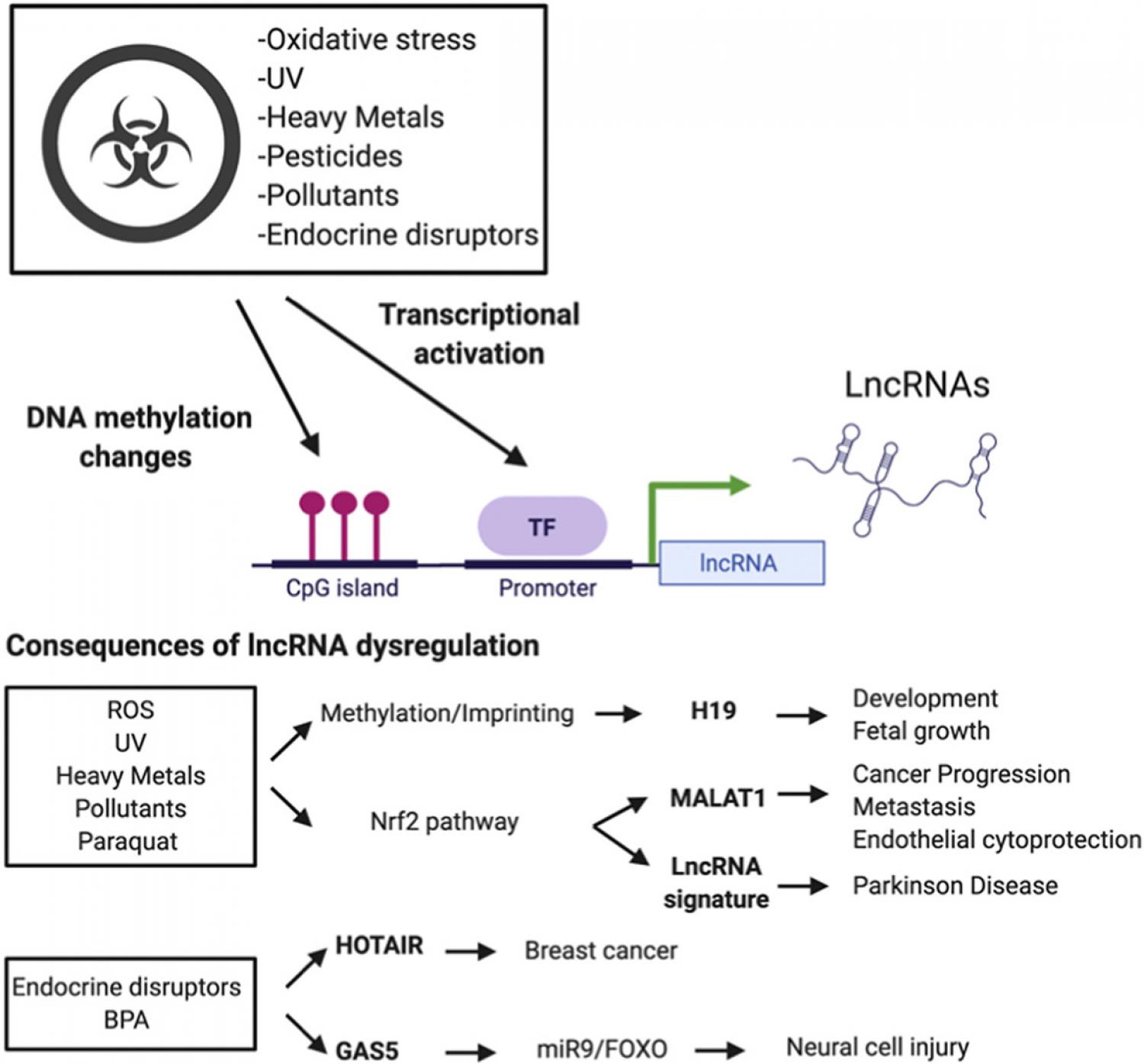
Elsevier, Redox Biology, Volume 37, October 2020
Environmental risk factors, including physicochemical agents, noise and mental stress, have a considerable impact on human health. This environmental exposure may lead to epigenetic reprogramming, including changes in non-coding RNAs (ncRNAs) signatures, which can contribute to the pathophysiology state. Oxidative stress is one of the results of this environmental disturbance by modifying cellular processes such as apoptosis, signal transduction cascades, and DNA repair mechanisms. In this review, we delineate environmental risk factors and their influence on (ncRNAs) in connection to disease. We focus on well-studied miRNAs and analyze the novel roles of long-non-coding-RNAs (lncRNAs). We discuss commonly regulated lncRNAs after exposure to different stressors, such as UV, heavy metals and pesticides among others, and the potential role of these lncRNA as exposure biomarkers, epigenetic regulators and potential therapeutic targets to diminish the deleterious secondary response to environmental agents.
